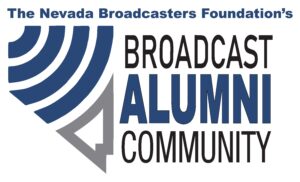As we noted in our list of November Regulatory dates for broadcasters, at its November 22 meeting, the FCC will be considering the adoption of a Notice of Proposed Rulemaking (see the draft order here) allowing AM stations to go all digital – on a voluntary basis. This Notice follows a Petition for Rulemaking which I filed on behalf of my client Bryan Broadcasting (see our articles here and here). The FCC’s NPRM, if adopted in the form of the draft Notice, suggests that the Commission, subject to a review of comments, is inclined to adopt the proposal to allow AM stations to voluntarily convert to an all-digital operation. While that is the tentative conclusion of the FCC, it does pose numerous questions on which it seeks comments.
The FCC’s questions include inquiries on the technical, programming, and operational aspects of the conversion of an AM station to digital. But the FCC recognizes some of the potential benefits of the all-digital operation and identifies some of the likely early adaptors of any such technology. These early adopters would likely include AM stations that have an FM translator that can continue to provide programming to the public even if some of the public does not have a radio with AM digital reception capabilities. We note that some AM operators with FM translators have already suggested the possibility of surrendering their AM signal, a proposal that has thus far been rejected by the FCC (see our articles here and here). The prospect of an all-digital AM operation would allow these stations to rely on their FM translator for current analog coverage of their markets, while trying to provide a more robust AM signal in the long-term rather than simply abandoning the service altogether. In addition, music stations are much more likely to be interested in an all-digital operation with the promise of higher fidelity than possible through an analog operation. But the FCC asks numerous other questions.
Some of the technical issues include whether the all-digital AM operation will in fact provide a better listening experience, will its signal be listenable for greater distances than the analog AM signal, will signal interference from bridges and power lines degrade the digital listening experience, and will the directional patterns of some stations reduce the benefits of the service? Other very specific technical issues about the standard are also raised in the draft Notice. Perhaps most importantly, as some commenters on the original petition for rulemaking expressed concerns, the FCC asks whether an all-digital operation will post a greater potential for interference to co-channel stations. The FCC tentatively concludes that interference to adjacent channel stations is unlikely to be a problem as the all-digital AM signal uses less of the assigned channel than current hybrid analog/digital operations.
The FCC also asks about other benefits that would be derived from an all-digital operation. Would artist and song information be displayable to listeners? Would AM stations have the potential to provide more data services? Would an all-digital operation allow for multicasting on AM as it does on FM? Could digital boosters be used to fill in gaps in the AM signal?
The FCC also asks about the costs. It suggests that the owner of the digital technology asks for a $10,000 licensing fee for current operations. Would that fee apply as well to an all-digital operation? The one AM station already operating on an experimental basis in all-digital mode – Hubbard Radio station WMFD(AM) in Frederick, Maryland – indicated that certain other equipment needed to be changed to allow for an all-digital operation. The draft Notice asks what these costs would include – and would these costs be faced by all converting stations?
The regulatory steps toward conversion were also the subject of a question. Currently, for an AM station to begin operating in the current hybrid mode where both analog and digital signals are being broadcast, only a simple notice to the FCC is required. The Commission asks if notice will be sufficient in this case as well – and can stations switch back to analog by notice if they determine that the digital operations are not successful?
If the FCC adopts this draft NPRM at its November 22 meeting, comments and reply comments will be due 60 days and 90 days, respectively, after the NPRM is published in the Federal Register. Watch for the discussion of this item at next week’s FCC meeting.
Courtesy Broadcast Law Blog


